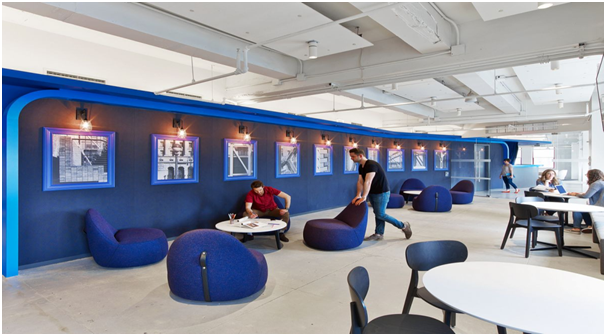Factors Influencing Longevity of Asphalt Pavements and Their Maintenance
Key Takeaways
- Discover essential factors affecting asphalt pavement durability.
- Learn why regular maintenance is crucial for longevity.
- Gain insights into effective repair techniques and their benefits.
Table of Contents
- Introduction to Asphalt Pavements
- Material Quality and Its Impact
- Environmental Influencers
- Importance of Regular Maintenance
- Common Repair Techniques
- Innovations in Asphalt Technology
- Conclusion
Introduction to Asphalt Pavements
Asphalt pavements are integral to the fabric of our daily lives, underlying the roads we drive on and the parking spaces we use. Whether for highways or neighborhood streets, these surfaces must be reliable and long-lasting. Various factors influence the longevity of asphalt pavements, necessitating a comprehensive understanding of these elements for anyone seeking on-site paving estimates Granger IN. This understanding not only aids in constructing high-performance pavements but also emphasizes the importance of proactive and effective maintenance to ensure these surfaces remain functional over their intended lifespan.
The interplay between material quality, environmental influences, and maintenance practices forms the cornerstone of effective pavement management. This interconnectedness highlights that no single factor alone dictates performance; instead, the synergy of all contributing factors ensures longevity and cost-efficiency over time.
Material Quality and Its Impact
The materials used in constructing asphalt pavements—specifically aggregates and binders—are pivotal to the pavement’s longevity. These parts must adhere to strict quality criteria to survive the rigors of traffic and environmental conditions. In addition to improving the pavement’s longevity and use, high-quality materials result in significant maintenance and repair cost savings over the pavement’s lifetime. The Federal Highway Administration (FHWA) underscores the importance of investing in the best possible materials for optimal durability and performance. This investment pays dividends in reduced wear and tear, minimized repair needs, and extended pavement life.
Furthermore, the choice of materials must consider locality-specific needs, leveraging materials that best suit the indigenous climate and usage patterns of the installation site. This approach ensures the pavement can effectively handle local environmental and usage stresses, enhancing its longevity.
Environmental Influencers
Environmental conditions significantly influence the durability of asphalt pavements. Factors such as temperature extremes and precipitation levels can substantially affect the structural integrity of these surfaces. For instance, freeze-thaw cycles in colder climates can cause cracking and deterioration, while intense heat can lead to asphalt softening and deformation. The implications are that pavements in different regions will face unique challenges based on their environmental conditions.
Adapting paving practices to consider these environmental factors can significantly mitigate potential damage, emphasizing the necessity of selecting appropriate materials and construction techniques. By anticipating and responding to weather-related stresses, pavements are better equipped to withstand environmental challenges, maintaining their structural integrity and extending their usable life.
Importance of Regular Maintenance
Regular maintenance is vital to achieving and preserving asphalt pavements’ desired lifespan. Minor deficiencies can quickly escalate into significant structural problems that pose safety hazards and incur greater repair costs without timely interventions. Maintenance procedures like crack sealing, seal coating, and proper drainage are essential in preventing such escalation.
Consistent maintenance also benefits road safety and driving comfort. According to the National Asphalt Pavement Association (NAPA), well-maintained pavements reduce vehicle wear and tear, lower emissions, and improve ride quality. These benefits highlight the multifaceted value of regular, preemptive maintenance activities.
Common Repair Techniques
Various repair techniques are available for maintaining asphalt pavements, each tailored to specific types of damage. Standard methods include crack sealing, patching, and overlay. Crack sealing prevents water ingress and subsequent pavement base erosion, while patching provides a quick fix for potholes and localized damage. Conversely, overlays involve laying a new asphalt layer over the existing surface, offering a cost-effective way of rejuvenating worn pavements.
Timely deployment of these techniques can stave off further damage and prolong the pavement’s life. Strategically choosing and implementing repair methods based on the specific issues and overall pavement condition is essential for optimal results.
Innovations in Asphalt Technology
Asphalt technology continually evolves, introducing innovations that enhance performance and environmental sustainability. Recent advancements include the development of temperature-resistant binders, recycled asphalt products, and additives designed to improve strength and durability. Furthermore, integrating intelligent compaction technology and predictive maintenance analytics establishes new paradigms in effective pavement management.
These innovations transform the industry by boosting asphalt pavements’ performance capabilities and promoting environmentally responsible practices. Staying current with these technological trends ensures that pavements benefit from the latest advancements and achieve superior performance and sustainability metrics.
Conclusion
Various interrelated factors, including material quality, environmental conditions, and maintenance practices, determine asphalt pavements’ longevity and performance. Investing in high-quality materials, adapting to environmental challenges, and prioritizing regular maintenance significantly improves the useful life of asphalt surfaces. Moreover, embracing technological advancements promises to refine maintenance strategies and infrastructure resilience further.
Cultivating a greater understanding of these components and how they interact will help create pavement solutions that satisfy present demands and support future infrastructure needs while being in line with more general economic and environmental objectives.










